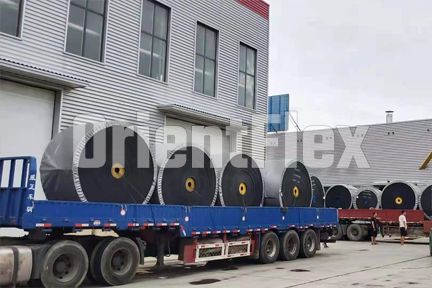- Email orientflex@orientrubber.com
- WhatsApp / Phone+86 180 3186 9514
If the conveyor is improperly maintained, the belt may quickly wear out and component failures may occur, leading to downtime and repairs. This has a corresponding negative impact on productivity and profits. Therefore, we must improve our understanding of the common problems of conveyors, and learn to solve and prevent conveyor problems. Let's learn about the three major problems of conveyor shutdown and the reasons for the solution with the editor of the conveyor belt:
1. Common faults of conveyors:
Material transportation in mines accounts for a large proportion of total mining costs. Therefore, the conveying system has become a common solution to improve operation efficiency. The challenge is that conveyors usually operate under extremely harsh conditions, such as dirty environments, excessively high or low temperatures, and high humidity. If improperly maintained, the conveyor may experience rapid belt wear and component failure, resulting in downtime and repairs. This will have a corresponding negative impact on productivity and profits.
2. The three major problems of common conveyor shutdown and their solutions:
2.1. Belt deviation
Problem: When the belt deviates from its required path, belt deviation will occur. This is a serious problem that can cause belt damage, equipment failure, and material spillage. There are many reasons for belt deviation, such as insufficient belt tension, unbalanced load, incorrect splicing, component deviation, material accumulation on components and components, and so on.
Solution: A better solution is to find the root cause of belt deviation to prevent the same problem in the future. Carrying out a belt inspection can help identify potential problems that cause misalignment in order to develop a suitable solution. If the belt has a slight deviation, you can use the self-aligning idler to correct the trajectory of the belt and ensure that it will always run straight in the future.
2.2. Material return
Problem: When a small amount of material adheres to the belt, the conveyor will appear to be transported back. This can cause materials to accumulate under the conveyor belt or on the rollers and drums. Certain materials, such as cohesive soil and certain ores, stick to the belt more easily than others. Although the amount of return transportation is very small, after a long period of time, there will be tons of materials accumulated and have to be cleaned up a second time. The return of materials can also cause safety and environmental hazards, increase cleaning costs, and is generally not conducive to the operation of the conveyor system in a better state.
Solution: A simple solution is to install a belt cleaner designed to prevent back shipment. The many benefits brought by the belt cleaner are enough to offset its initial investment cost. Reduce material spills, save maintenance costs, and create a safer working environment. In addition, a clean belt can also prevent premature damage to the idler roller, extend the life of the belt, and keep the system in a better operating condition.
2.3. The belt is damaged
Problem: There are several reasons for belt damage, such as excessive impact, deviation, improper use of the sealing system or belt cleaner, component jamming, and insufficient drum traction. The belt is a more expensive part of the conveyor, so the potential cause of the belt problem must be found and measures must be taken actively to avoid irreparable damage.
Solution: There are many reasons for belt damage, so there are many different solutions. For example, installing buffer rollers or brackets in the feeding area can disperse the impact of falling materials, thereby reducing wear and tear on the belt. Using a proper sealing system can prevent the belt from being damaged by jammed materials. The use of suitable roller coating materials can increase friction and prevent belt slippage without being damaged quickly. These solutions all help to reduce maintenance downtime to a large extent, which can usually be determined through a belt inspection. Belt inspection can catch minor belt damage, thus avoiding serious failures in the future.
You can contact or visit us in our office from Monday to Friday from 8:00 - 18:00





